
Apollo Galleries
25 Bury Place, Bloomsbury, London WC1A 2JH
742-499-4167
About Auction House
Founded by Dr. Ivan Bonchev in 2010, Apollo encompasses all aspects of collecting and appreciating ancient art, antiquities and coins. Our specialities include: Ancient Roman, Greek, Asian, Egyptian, Medieval, Viking and Neolithic.Auction Previews & News
9 Results-
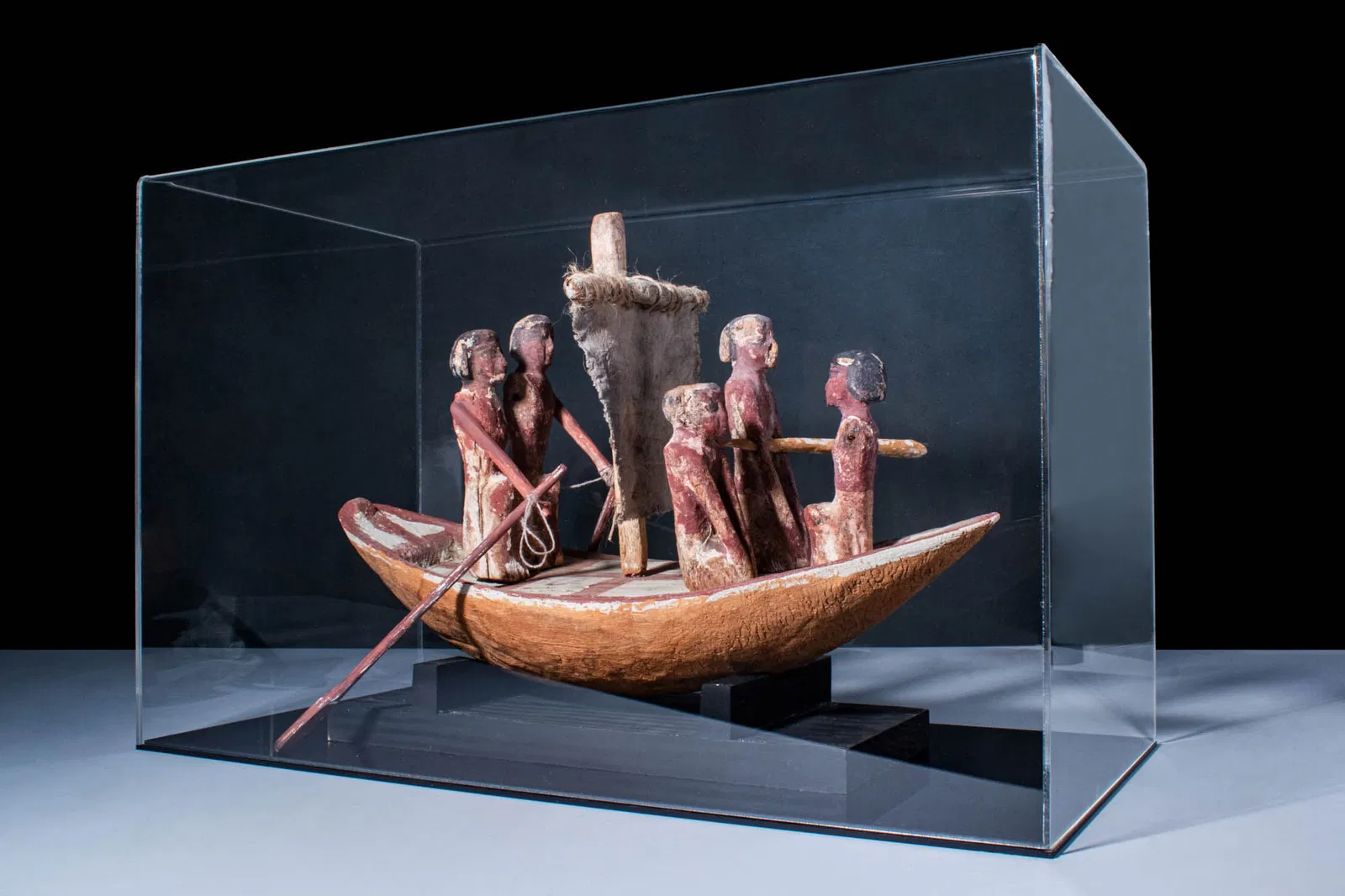 Auction Industry, Press Release
Auction Industry, Press ReleaseApollo’s Dec. 15 Fine Ancient Art & Antiquities Auction delivers holiday selection of extraordinary treasures dating as early as the 50th century BC
Many prized artifacts have provenance from acclaimed collections of Alison Barker, Nahum Goldmann, Shlomo Moussaieff, Dr Guido Goldman, W. Benson Harer, Drexel Institute, and others Egyptian Wooden Boat Model LONDON – Apollo Art Auctions takes utmost pleasure in announcing highlights of their December 15 Fine Ancient Art & Antiquities live gallery auction, which will start at 3pm GMT/10am US Eastern time, following a red-carpet morning session devoted exclusively to The Prince Collection. The afternoon event offers collectors a stellar selection of Ancient Egyptian, Roman, Greek, Viking, Medieval, Western Asiatic and other top-tier antiquities dating from the 50th century BC to 15th century AD. Absentee and Internet live bidding will be available to remote participants through Apollo Live or LiveAuctioneers. Peerless provenance is the rule and not the exception throughout the 405 lots expertly curated for this sale. Many of the prized artifacts were formerly in such internationally acclaimed collections as those of London barrister Alison Barker (1951-2021), Mrs B Ellison, W Benson Harer, Drexel Institute, the Minneapolis Institute of Art, Nahum Goldmann (1894-1982), Shlomo Moussaieff (1923-2015), and Dr Guido Goldman (1937-2020). A fabulous assemblage of Ancient Egyptian art and relics will launch the sale, and in the case of Lot 2, in quite a literal sense, as it is an iconic and well-preserved Egyptian boat model. Dating to the Middle Kingdom period, circa 2055-1790 BC, it was meticulously carved from sycamore wood and symbolizes the journey of a deceased person’s soul into the Afterlife. It is a realistic depiction of a marine craft, with details faithful to those of a real boat of its period, including rowers, a helmsman, oars, sails and original painted decorations. The piece has been reviewed by Simone Musso, consultant curator for Egyptian antiquities at the Stibbert Museum, Florence, Italy, and member of the Nuri Archaeological Expedition. Measuring 370mm x 200mm/15.6in x 8in, its previous ownership was with a London art gallery and, before that, a French collection where it had resided since the 1970s. Its opening bid at auction is £5,000/$6,370. An outstanding example of Ancient Greek pottery, a circa 510-500 BC Attic red-figure kylix…
-
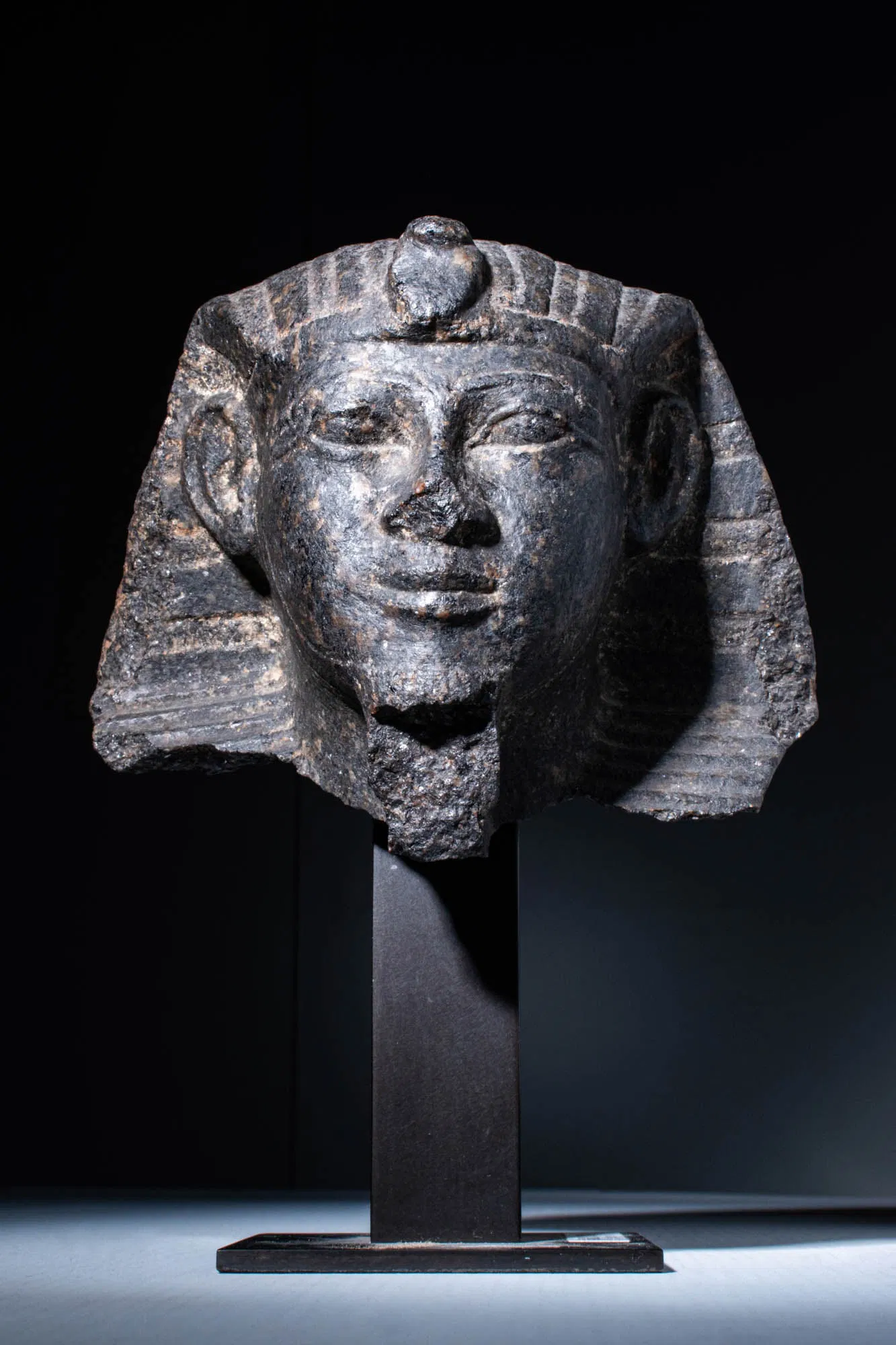 Auction Industry, Press Release
Auction Industry, Press ReleaseRoyal provenance crowns Apollo Art Auctions’ Dec. 15 Fine Ancient Art & Jewellery Auction exclusively featuring The Prince Collection
Egyptian treasures include rare granite head of pharaoh, large vessel with painted image of Nile scene; Amarna Period sandstone relief of pharoah worshipping the god Aton; Greek & Roman jewellery Rare Egyptian Granite Head Of Pharaoh LONDON – On Sunday morning, December 15, 2024, Apollo Art Auctions will roll out the red carpet for a very special Fine Ancient Art & Jewellery Auction exclusively featuring The Prince Collection, one of the largest royal-provenance collections ever presented by the Central London firm. The 280-lot selection includes breathtaking antiquities of Egyptian, Phoenician, Greek, Roman, Byzantine and Asian origin, with a timeline that spans the 40th century BC to 16th century AD. The live gallery auction, with absentee and Internet live bidding available through Apollo Live or LiveAuctioneers, will begin at 10:30am GMT (5:30am US Eastern Time). Prior to acquisition for The Prince Collection, many of the premier holdings were the property of esteemed collectors and institutions, including Jean-Paul Barbier Mueller (1930-2016), Robert Hatfield Ellsworth (1929-2014), Edith Bader Koller, W Arnold Meijer, Kurt Flimm, A Obrecht, Jacques H Carre, Jean-Marie Talleux (1930-1995), the Khawam brothers, and the Thalassic Collection. Perhaps the top prize of the day will be the handsome Egyptian black granite sphynx head of a pharaoh of the XXVth Dynasty (747-653 BC), probably Taharqa (690-971 BC). The pharaoh’s face has defined and elegant facial features, almond-shape eyes, full lips, a prominent nose, and a contemplative expression. His nemes headdress is adorned with a frontal uraeus cobra. Measuring 130mm x 120mm (5.1in x 4.7in) and weighing 2.25kg (4lbs 15oz), this rare item was reviewed by Simone Musso, consultant curator for Egyptian antiquities at Stibbert Museum, Florence, Italy, and member of the Nuri Archaeological Expedition. Prior to acquisition for The Prince Collection, 1990s-2014; it was held in the private collection of Jack Josephson. Opening bid: £20,000/$25,485 The sale opens with two notable Egyptian sandstone reliefs to be offered as consecutive lots. Lot #1 is a panel depicting the Egyptian Pharaoh Akhenaten worshipping the ancient god Aton. This artifact is particularly significant because Akhenaten was the first to introduce monotheism in Ancient Egypt –…
-
 Auction Industry, Press Release
Auction Industry, Press ReleaseApollo Art Auctions traverses Asia’s Silk Road with exciting Dec. 14 sale of Fine Islamic, Indian & Chinese Art
Islamic highlights include important 7th-8th century Sodgian silver elephant incense burner and early-14th-century molded pottery tile wall panel with stunning turquoise and cobalt blue palette Silver Incense Burner In The Shape Of An Elephant With A Rider LONDON – On December 14, Apollo Art Auctions will explore the ascendancy and incomparable beauty of fine Islamic and Asian art through a 348-lot sale of historically-important, expertly-vetted pieces. The live gallery auction, with optional online bidding, is a virtual museum-level showcase for exceptional Islamic, Indian and Chinese artworks as well as Korean and Tibetan pieces, with a timeline starting around 3000 BC and continuing to the 19th century AD. The Saturday auction session will commence at 1pm GMT (8am US Eastern time). Prestigious provenance accompanies literally every piece on the auction roster, including Islamic and Indian objects whose former owners included Henri René d’Allemagne and the Marquis de Ganay. The Southeast Asian portion of the sale features an impressive array of Chinese artworks from the collections of Phillip Allen and the estate of Roslyn Willett. The list of highlights is led by a rare and extraordinary Sogdian (7th-8th century A.D.) silver incense burner sculpted as an elephant transporting an ornately-dressed rider. It bears the Arabic signature of “Fazil” or “Faisal,” the master artisan who created it. An advanced standard of artistry is evident in its adornments, which include intricate floral motifs and a stunning openwork structure atop the pachyderm’s back. This remarkable treasure, with its motif reflective of elephant depictions in Asian palace art of its period, has immense significance. It measures 260mm x 900mm wide (10.2in x 35in) and weighs 563 grams. Formerly, it was the property of a European collector; and prior to that, Mr Nathan Axtel. It was sold to the latter gentleman in 1979 by Mr Andrew Bannister, London. It will convey to the winning bidder with a full historical report. Further information regarding the piece may be obtained prior to the auction by contacting Apollo’s director, Dr Ivan Bonchev (PhD, University of Oxford). Bidding will open at £400,000/$510,282. From the early 14th century AD, a molded pottery…
-
 Auction Industry, Press Release
Auction Industry, Press ReleaseJoin London’s Apollo Art Auctions for a special November 17 e-sale of exquisite ancient art, cultural relics, weapons and jewelry
Featured: Gilded Merovingian (400-600 AD) longsword, Medieval iron helm with eye-slits & breathing holes, Arabian alabaster figure of monk, rich gold Viking pendant, Greek glass, Apulian pottery Merovingian Longsword With Gold Handle LONDON – Hundreds of exciting buying opportunities await collectors of ancient art and cultural relics at Apollo Art Auctions’ November 17 e-sale. The expertly-curated selection includes authentic, well-provenanced artifacts from Classical Europe through Egypt and the Near East, as well as fascinating treasures from India, China and the Islamic world. Apollo makes the auction process pleasurable and easy for international bidders by accepting payments in US dollars, British pounds sterling or euro and handling all packing in-house prior to shipment. Bid securely online through Apollo Live, including via their free app; or through any of three other bidding platforms. Heavy metal isn’t just a music genre; it’s also one of the most consistently popular categories in Apollo’s sales, year round. Two lots rise to the top of metal offerings in the November event, starting with an elegant edged weapon from the era of the Merovingian Dynasty. The circa 400-600 AD longsword has a double-edged blade with an extremely shallow fuller (groove or slot) and sharp tip. Its bronze crossguard and wood handle are highly decorated with gold leaf, and its large stone pommel is secured by a gold- and glass-adorned end cap. A long trail of provenance indicates it was most recently the property of a European collector, who acquired it on the English art market in 2016; preceded by the collection of T. R., who obtained it in 2000. Prior to that, it was part of the private British collection of Mr. W. L., whose ownership began in 1965. Bidding on this exceptional weapon will open at £12,000 ($15,562). Dating to circa 1300-1400 AD, a riveted iron great helm was designed with a distinctive barrel-like shape specifically intended to protect a knight’s whole head in combat. Helmets were important elements of medieval knightly armor, and it is known that they often were included on funerary monuments. The compelling visage on the auction example has rectangular slits for…
-
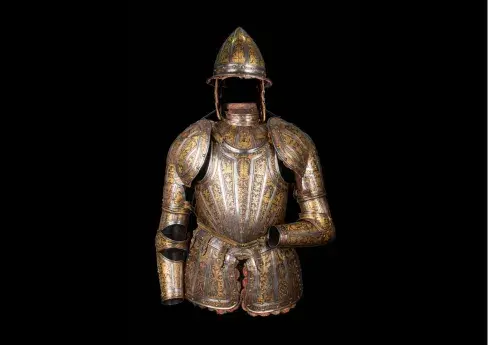 Auction Industry, Press Release
Auction Industry, Press ReleasePrestigious provenance bolsters Apollo Art Auctions’ Oct. 12-13 sale of antiquities, ancient military artifacts, jewelry and decorative art
Battle royale for top-lot honors pits magnificent Tsar Nicholas II shashka – only royal sword ever offered for public sale – against circa-1509 gilded suit of armor by Della Cesa, ‘armorer to kings’ Superb Italian Etched And Gilt Armour By Pompeo Della Cesa LONDON – Apollo Art Auctions’ October 12-13 Fine Ancient Art & Antiquities sale offers the company’s flourishing audience of bidders a chance to acquire pieces of unrivaled excellence and integrity, each one supported by venerable provenance. The 905-lot auction includes important rarities sourced from the Imperial Russian Romanov Collection, the Prince Collection, the Stephen Joel Albert Collection, the Spencer Joshua Alwyne Compton (Second Marquess of Northampton) Collection, the Alison Barker Collection, the Mrs B Ellison (of the Egyptian Exploration Society) Collection, the Duc de Dino Collection, and the Nicholas Wright Collection. As the fully-illustrated auction catalog attests, the sale comprises a broad range of desirable items, including wearable jewellery vetted by ancient jewelry specialist Sami Fortune, fascinating military relics, and seals studied by renowned archaeology expert Professor Wilfrid George Lambert FBA (1926-2011). Egyptian decorative pieces come with historical reports from Simone Musso, consultant curator for Egyptian antiquities at the Stibbert Museum in Florence and a member of the Nuri Archaeological Expedition. Expertly-vetted Roman, Greek and Asian artifacts come with historical reports from Alessandro Neri, an international cultural heritage expert based in Florence, Italy. Also, bidders have the assurance of knowing all auction items have been cleared through the Art Loss Register database. Two absolutely unique productions lead the ancient and antique armor category. First, there is an extremely fine-quality Caucasian shashka gifted to Nicholas II, Tsar of Russia, when he was Tsesarevich (heir apparent). Research suggests the saber was presented to Nicholas during a tour of the Caucasus with his father Tsar Alexander III, in 1888. An Arabic inscription in gold on the blade translates to: (M)ay the dominance of the owner of this sword grow, and his life, and his greatness, and may Allah bless his family, and he will achieve his goal. It is also monogrammed with the letters “N” and “A” (for Nicholas Alexandrovich),…
-
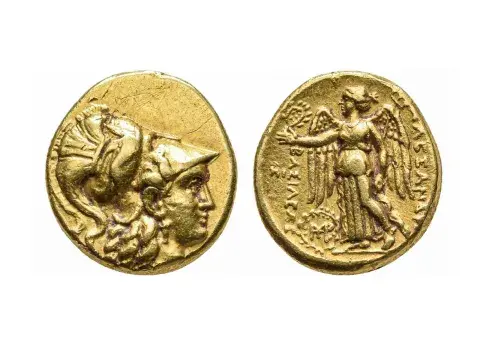 Auction Industry, Press Release
Auction Industry, Press ReleaseApollo Art Auctions’ popular e-sale series returns Aug. 24-25 with precious coins, ancient art & antiquities
Featured: Exemplary gold and silver Roman, Greek and Byzantine coins; rare cultural art, relics and weaponry from Classical Europe, Egypt, the Near East, India and China plus fine Islamic pieces Circa 311-300 BC Kings of Macedon gold coin, Alexander III ‘The Great’ (336-323 BC), struck under Seleukos I Nikator, Babylon. Obverse: head of Athena facing right and wearing Corinthian helmet and jewelry. Reverse: Nike standing left with wings spread, holding laurel wreath and stylus. Weight: 8.54g. Opening bid: £1,000 ($1,276) LONDON – Some of history’s most fascinating artifacts have passed through the doors of Apollo Art Auctions’ elegant Central London gallery. On August 24 and 25, in an online-only format, a fresh selection of precious coins, ancient art and antiquities will continue Apollo’s tradition of offering only the finest authentic examples of material culture from important civilizations. The opening session of the two-day event includes a bounty of exceptional coins from the Roman Empire, Greek and Byzantine periods; while day two of the e-sale features art treasures and antiquities of Classical Europe, Egypt, the Near East, India, China and the Islamic world. Each item has been rigorously vetted by a top specialist from Apollo’s team of experts. Bid absentee or live online through LiveAuctioneers. Numismatists, whether advanced or beginners, will have 377 lots from which to choose, with coveted gold coins leading the selection. A circa 337-361 AD Constantius II, Caesar Constantius, Thessalonica AV (gold) solidus weighing 4.61g shows a diademed, draped and cuirassed bust of a right-facing Constantius on the obverse. The reverse depicts the distinguished ruler standing left and holding a scepter and vexillum, with two signa to his right. It will open for bidding at £1,000 ($1,276). A stunning circa 311-300 BC Kings of Macedon, Alexander III “The Great” (336-323 BC) gold coin was struck under Seleukos I Nikator of Babylon. On its obverse, the coin portrays Athena facing right and wearing a Corinthian helmet adorned with a griffin on the bowl, plus a pendant earring and pearl necklace. The reverse shows Nike standing left with wings spread, holding a laurel wreath and stylus. This coin weighs…
-
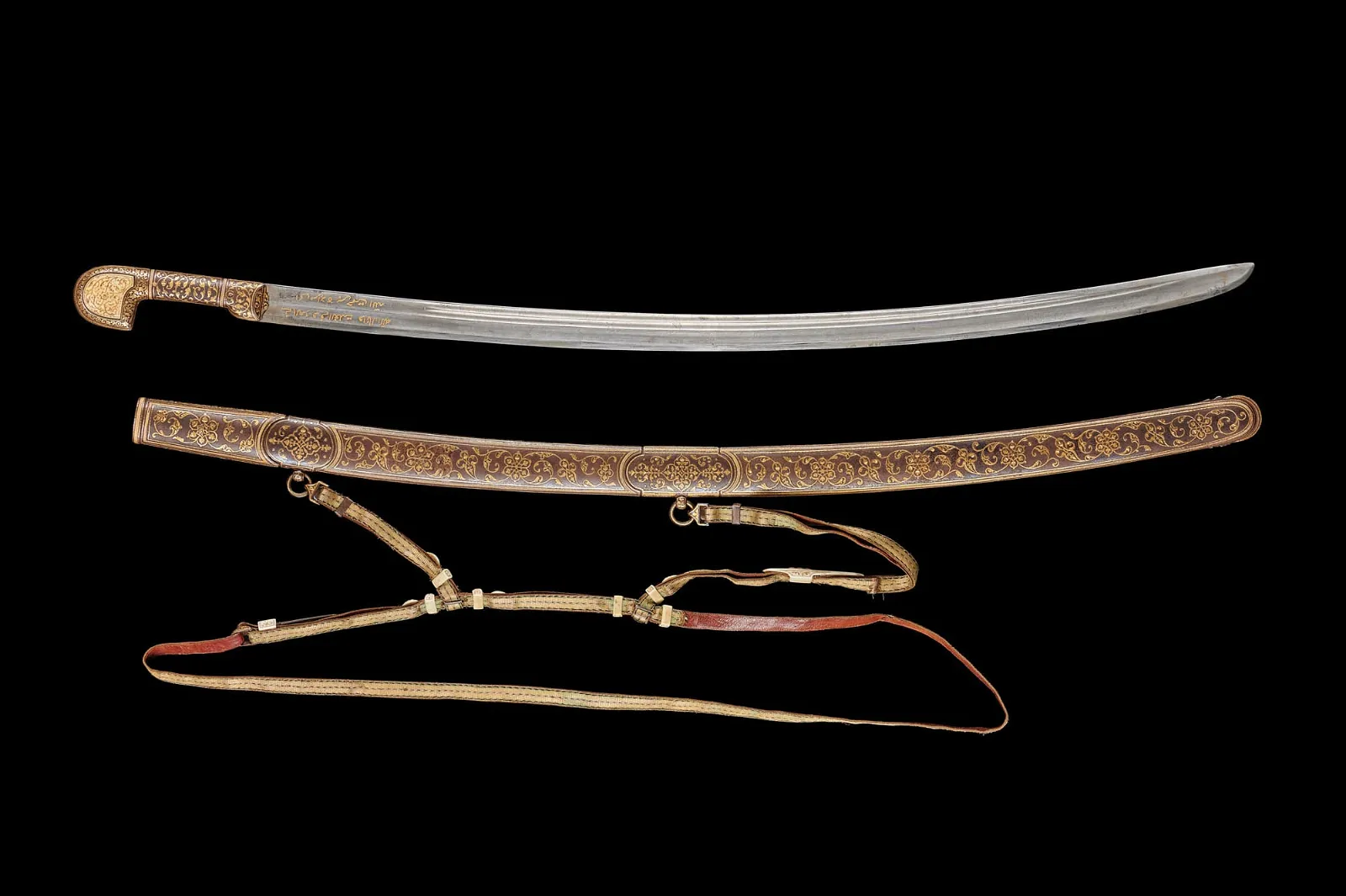 Auction Industry, Press Release
Auction Industry, Press ReleasePremier treasures of European royalty crown the luxe selection awaiting collectors at Apollo’s July 13-14 Fine Ancient Art, Antiquities & Militaria Auction
Featured: Inscribed and gilded Caucasian shashka of Tsar Nicholas II of Russia, the only royal sword every offered for sale; circa-1509 suit of armor by Pompeo Della Cesa, armorer to Philip II of Spain Extremely fine-quality Caucasian shashka that belonged to Nicholas II, Tsar of Russia, given to him when he was Tsesarevich (heir apparent). Research suggests it was presented to Nicholas during a tour of the Caucasus with his father Tsar Alexander III, in 1888. Arabic inscription in gold on blade near hilt: ‘(M)ay the dominance of the owner of this sword grow, and his life, and his greatness, and may Allah bless his family, and he will achieve his goal.’ Monogrammed with the letters ‘N’ and ‘A’ (for Nicholas Alexandrovich), which are surrounded by a golden laurel and surmounted by the Imperial Russian crown. Wonderfully decorated scabbard with calligraphic Arabic inscription that translates to ‘Abdullah worked,’ the equivalent of a European maker’s mark. Only royal sword ever offered for public sale. Provenance: Property of a European collector; ex Eugene Mollo collection, Switzerland. Opening bid: £1,200,000 ($1,516,300) LONDON – Central London’s vibrant Fitzrovia neighborhood – an urban village with a bohemian history – is home to many celebrities and art-centric businesses, including Apollo Art Auctions. Antiquities aficionados and militaria buffs flock to Apollo’s sales of ancient art and material culture to view, bid on and hopefully acquire some of history’s most fascinating artifacts. Apollo’s next fully-curated, no-reserve event, an Ancient Art, Antiquities and Militaria Auction, will take place on Saturday and Sunday, July 13-14 and features a wealth of exquisite and well-provenanced works that chronicle the world’s most influential civilizations. In addition to in-house bidding, Apollo welcomes absentee, phone and Internet live bidding through LiveAuctioneers. “We’re delighted that our next auction includes antiquities from so many well-established collections, such as The Prince Collection,” said Apollo Art Auctions’ director and principal auctioneer, Dr Ivan Bonchev (PhD, University of Oxford). “A very high standard was set for this sale. Each art object and ancient military or cultural relic was scrupulously curated and researched during the cataloging process to ensure they were…
-
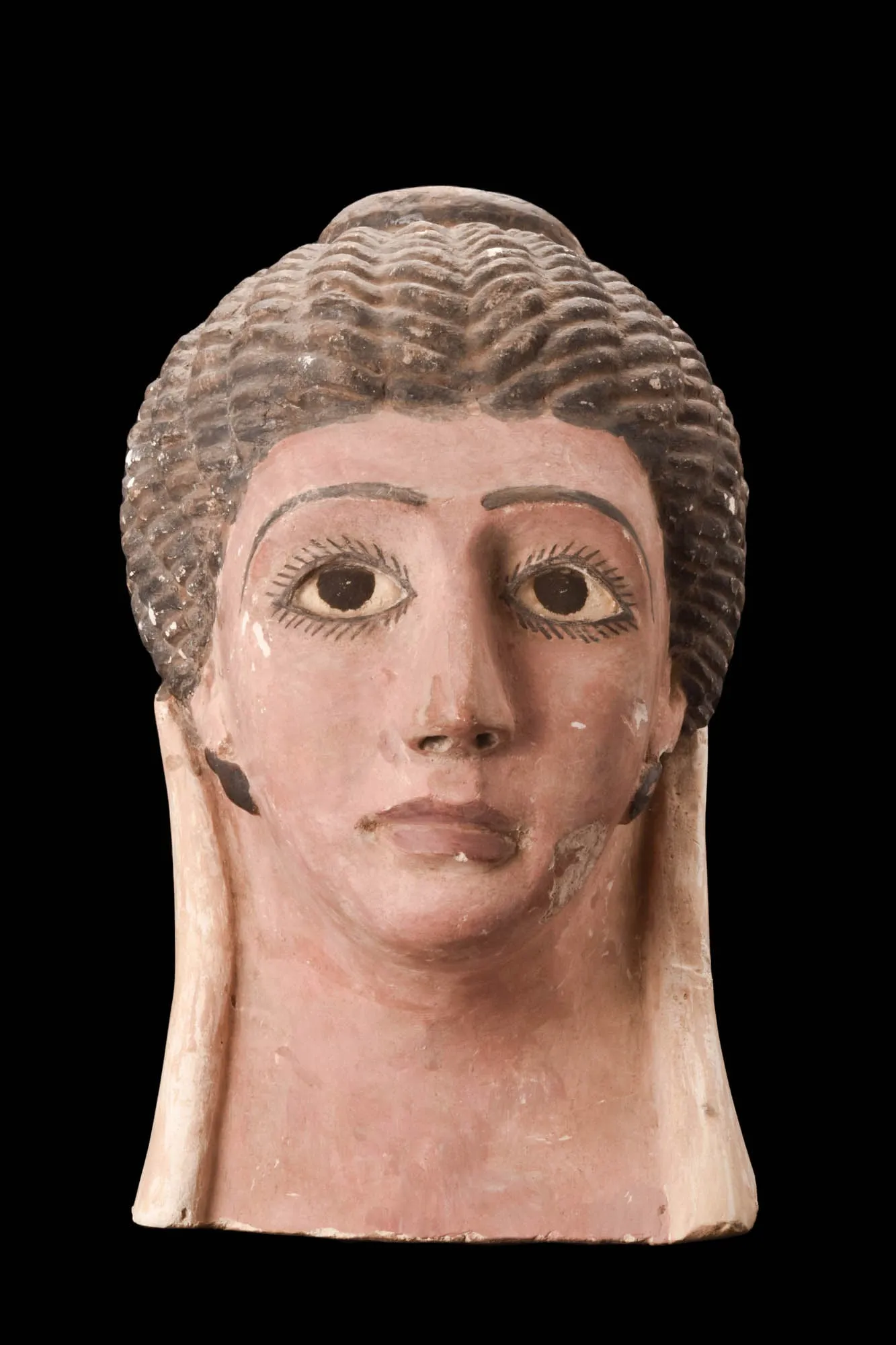 Auction Industry, Press Release
Auction Industry, Press ReleaseExpertly curated treasures of Ancient Egypt, Rome, Near East and China selected for Apollo’s special June 11 online-only auction
Featured: Unusual Egyptian ceramic funerary mask, monumental bronze of Venus, white marble head of Dionysus, Roman gold jewelry & glass; carved marble statue of Bodhisattva, medieval swords Circa 30 BC-323 AD Egyptian polychrome ceramic funerary mask of youthful female with braided hair and painted eyebrows, hair, lips, earrings and eyes, which have inset glass panels. Size: 275mm x 160mm (10.83in x 6.3in) Weight: 2.16kg (4lbs 12oz). Provenance: Property of an Israeli gentleman; acquired from Aaron Gallery, Berkeley Square, London W1 in 2011; formerly in the Issa collection, early 1980s. Opening bid: £5,000 ($6,400) LONDON – Collectors of ancient art and antiquities who never miss an Apollo Art Auctions live gallery sale won’t have to wait till the next big in-person event (slated for July) to acquire rare and fascinating treasures for their collections. On June 11, the London-based firm will host a special 495-lot online-only sale of well-provenanced and carefully authenticated artifacts from Classical Europe, Egypt and the Near East, with additional art and relics from ancient India and China. Each item entered in this bonus auction has been rigorously vetted by a top specialist from Apollo’s team of experts. The auction’s timeline begins in one of the earliest and most influential centers of human progress: Egypt. Known as the “cradle of civilization,” Egypt’s society was advanced beyond measure in science, mathematics and art, yet their overriding focus – some say obsession – was with the afterlife, which they viewed as a continuation of one’s eternal journey. Deceased individuals were bedecked with amulets, jewels and funerary masks for their send-off to the next world. A particularly fine example of this sort of adornment is the auction’s opening lot: a circa 30 BC-323 AD Egyptian polychrome ceramic funerary mask of youthful female. She is shown with braided hair and painted eyebrows, hair, lips, earrings and eyes, which have inset glass panels. The mask was previously the property of an Israeli gentleman and was acquired from Aaron Gallery, Berkeley Square, London, in 2011. Before that, it was part of the Issa collection (early 1980s). The starting bid is £5,000 ($6,400). Along with embalming…
-
 Auction Industry, Press Release
Auction Industry, Press ReleaseApollo Art Auctions to host April 27-28 sale featuring connoisseur-level ancient artifacts with superlative provenance
Many pieces were previously owned by eminent Egyptologists, archaeologists and private collectors including Mrs B Ellison, Dr Rudolf Schmidt, Axel Guttmann, the Barbier-Mueller family and more Rare Egyptian Stone And Wood Pseudo-canopic Jars LONDON – Following a triumphant January auction that introduced The Prince Collection, Dr Ivan Bonchev, Director of Apollo Art Auctions, takes pleasure in announcing an April 27-28 auction replete with rare and immensely important cultural artifacts from several collections of great renown. Among the highlights are precious objects with provenance from Mrs B Ellison, a member of The Egyptian Exploration Society (EES), formerly known as the Egyptian Exploration Fund (EEF). The institution was founded in 1882 by Amelia Edwards and Reginald Stuart Poole with the primary objective being the exploration, surveying and excavation of Egyptian locales. Other spectacular pieces in the auction were once owned by Dr Rudolf Schmidt (1900-1970), a collector widely acknowledged for his discerning taste in antiquities. Dr Schmidt inherited a substantial family collection of ancient artifacts, much of which had previously been acquired from the Barbier-Mueller family, esteemed collectors with a more than century-long collecting legacy of their own. Perhaps no other collector and scholar of European weapons is as revered as Axel Guttmann (1944-2001). Thanks to Mr Guttmann’s generosity, his collection of more than 1,000 relics was widely exhibited and made accessible to researchers and historians, taking the ancient weapons hobby to a new level. His fabled collection was auctioned in 2002 and 2004, and it is now Apollo Art Auctions’ honor to present treasures with provenance from the Guttman collection in their April 27-28 sale. A top highlight of the Ancient Egyptian category is an Amarna Period (New Kingdom, 18th Dynasty, circa 1353-1322 BC) sandstone relief that depicts a pharaoh, probably Amenhotep IV Akhenaten, worshiping rays emitted by the god Aten. A well-defined sculpture, it is engraved in the distinctive style of the Amarna Period, i.e., characterized by exaggerated features. The published artwork is similar to examples held in The British Museum and Harer family trust collection. It is accompanied by a historical report prepared by Apollo Art Auctions’ new consultant,…
-
 Auction Industry
Auction IndustryApollo’s Chariot at Versailles Restored to its Former Glory
After spending 14 months in the Coubertin Foundry, the most famous fountain in the gardens of Versailles is back where it belongs in the Grande Perspective designed by André Le Nôtre. © Didier Saulnier Eager to pull the sun across the sky, Apollo, accompanied by a cherubic Cupid, drives his chariot hoisted out of the water by four spirited horses, with as many dolphins between them, with four tritons trumpeting his fame at the four cardinal directions. Each sculpture in this group by Jean-Baptiste Tuby (1629-1700) has its own vitality, giving the whole a lifelike energy. On February 15, Laurent Salomé, director of the National Museum of the Palaces of Versailles and Trianon, was moved at the sight of the gilded god on his stone base. “Jean-Baptiste Tuby is really the French Michelangelo,” he said. “He deserves to be as famous as Coysevox and Girardon.” Jacques Moulin, the head architect of historic monuments responsible for the park and gardens of Versailles, who was in charge of the restoration of Apollo's Chariot (or “Apollo on His Chariot”), shares that conviction. “Jean-Baptiste Tuby (né Giambattista Tubi), an Italian artist who worked with Bernini in Rome, was an odd character,” he says. “Little is known about him, other than that he was capable of executing the gigantic statuary group in Apollo’s Basin, which must be seen from 30 meters (nearly 100 feet away). In France, unlike in Italy, sculpture didn’t appear in gardens until the mid-17th century. Primaticcio’s 16th-century statues for Fontainebleau were a one-off.” © Didier Saulnier An Allegory of PowerEarly in Louis XIV's reign, Colbert authorized funding for one large fountain per year for the young king, who was passionate about his gardens at Versailles, already considered the most beautiful in Europe during his father's lifetime. Brothers Gaspard and Balthazar Marsy received the commission to create the Dragon Fountain at the bottom of the Water Walk in 1666 and the Latona Fountain in 1667. The following year, Tuby was asked to create the huge Apollo Fountain sculpture, which weighs about 30 tons, including two-and-a-half for each horse. Apollo alone weighs six-and-a-half tons and stands 2.7 meters, or almost nine feet, tall. The…
-
 Auction Industry, Press Release
Auction Industry, Press ReleaseApollo Art Auctions presents aspects of The Prince Collection in Jan. 28 sale of antiquities with provenance from legendary 19th-century Egyptophiles
Highlights of featured collection can be traced to such visionaries as Rev. William MacGregor, Joseph Althounian and Daniel Marie Fouquet, who all collected long before the discovery of King Tut’s tomb Two Large Egyptian Faience Foundation Tiles LONDON – Dr Ivan Bonchev, Director of Apollo Art Auctions, takes utmost pride in announcing a Sunday, January 28, 2024 live and online auction of 560 lots featuring aspects of The Prince Collection, one of the finest and most advanced assemblages of antiquities in the world. The London auction house also plans a separate Monday, January 29 online-only sale focusing specifically on fine Chinese and Islamic art. Formed from the 1990s through 2014, The Prince Collection traverses the entire scope of cultural evolution, with items of peerless provenance and great rarity from the Neolithic, Egyptian, Hittite, Greco-Roman, and Near Eastern civilizations. Many of the items previously passed through the hands of legendary antiquities collectors of the 19th/20th centuries. A selection of Egyptian faience and engraved fragments was once the property of Reverend William MacGregor (1848–1937), a famous Egyptophile who traveled to Egypt in the mid-1880s. While there, he avidly acquired Egyptian art and cultural objects, and upon his return to Britain, loaned his collection to an 1895 exhibition at the Burlington Fine Arts Club in London. It was England’s first non-permanent exhibition to characterize Egyptian antiquities as artworks, captivating London’s elite. In 1921, MacGregor sold his collection to Spink & Son, who later auctioned the items at Sotheby, Wilkinson & Hodge (Sotheby’s). Those same antiquities were then purchased by Joseph Altounian (1890-1954), a renowned 20th century dealer and grandee of the art world who counted amongst his friends Modigliani, Picasso and the writer Guillaume Apollinaire. Born in Armenia, Altounian moved to Paris and opened a gallery in 1906 which was subsequently known as Altounian-Lorbet. The firm specialized in Egyptian and Greek art as well as decorative and medieval works, and sold to many major American and European museums. The Prince Collection’s remarkable array of Egyptian faience includes two large foundation tiles believed to have come from the Pi-Ramesses palace of King Ramesses II (New Kingdom,…
-
 Auction Industry, Press Release
Auction Industry, Press ReleaseApollo Art Auctions’ December 17 online-only event features expertly authenticated ancient art, artifacts and jewelry for every discerning collector
Stellar provenance and in-house curation support a confident and pleasurable bidding experience for all who appreciate fine treasures of the past LONDON – Acquiring precious antiquities and cultural art is a year-round pursuit, not only for those who collect such objects, but also for interior designers who recognize the way in which an ancient artwork – whether a statue, tapestry or painted vessel – can elevate the tone of a room’s décor. Apollo Art Auctions serves as the trusted conduit connecting buyers with the rare and authentic pieces they desire. For the holiday season, the London-based firm is proud to present a December 17 online-only auction of expertly authenticated, well-provenanced artifacts from Classical Europe through Egypt and the Near East, as well as many art treasures of China, India and the Islamic world. The 540-lot sale has been thoughtfully curated to ensure buyers at every level can acquire pieces of outstanding quality. For holiday gift-givers, Apollo has included a fine selection of ancient jewelry that includes gold earrings, pendants and rings, many of them adorned with garnets, amethysts and other stones; as well as brooches, bracelets, colorful beaded necklaces, and substantial silver designs by Viking artisans. Nearly 60 lots of ancient Egyptian art will be auctioned, from faience ushabtis, beaded shrouds and other mysterious funerary objects to pottery and stoneware vessels. The Egyptian civilization’s advanced appreciation of aesthetics is well exemplified in a rimmed stone plate or tray whose surface displays a beautiful array of natural veins. Made circa 3000-2750 BC, it was formerly the property of a North London gentleman and, prior to that, was part of a private collection formed in Paris in the 1970s to 1990s. Its opening bid is set at £2,000 ($2,520). Applied arts were at the center of Classical Greek culture, as well. An Attic red-figure krater with an attractive inverted bell-shape body dates to around the late 4th-3rd century BC and measures 290mm by 290mm (11.4in x 11.4in). Its richly painted program consists of a winged figure of Hypnos holding a trident on Side A; and a robed female, probably representing the deceased,…
-
 Auction Industry, Press Release
Auction Industry, Press ReleaseApollo Art Auctions celebrates luxe new venue with Nov. 5 gallery sale of premier Ancient Art and Antiquities
First live auction at new West End saleroom features Cycladic marble figure; Roman bust of Homer; important Gandhara Bodhisattva; medieval, Knights Templar, Greek Corinthian armor LONDON – Apollo Art Auctions, led by Dr Ivan Bonchev (PhD, University of Oxford), has enjoyed tremendous success as the auction branch of Apollo Galleries, London’s renowned source for authentic ancient art and antiquities. Since its inception, Apollo Art Auctions has conducted its flourishing online-auction business from its parent company’s premises at 25 Bury Place in fashionable Bloomsbury. Now the auction division has its own upscale address. While Apollo Galleries will continue to trade from its prime location near the British Museum, Apollo Art Auctions will operate from a separate but equally stylish West End property. Located at prestigious 63-64 Margaret Street, close to Oxford Street and Bond Street stations, the new venue includes rooms that have been purpose-designed and outfitted for live auctions and previewing, paving the way for Apollo’s expansion into exciting new categories: Asian and Contemporary Art. On Sunday, November 5, the Apollo family of companies will christen its newest location with a 501-lot, no-reserve Fine Ancient Art & Antiques Auction which Dr Bonchev describes as, “unquestionably our best sale to date.” All remote forms of bidding, including live online, will also be available for this and all future Apollo Art Auctions events. Overseeing the ancient art selection is a rare and fascinating marble Cycladic II female idol of the Chalandriani Type. It is a product of the Aegean Keros-Syros culture and dates to circa 2800-2300 BC. The figure’s head is rendered in the shape of an inverted triangle, and its body, with skillfully incised accent lines, follows a tapered shape. This curious survivor is similar to examples at Musee du Louvre, Paris; and the Archaeological Museum in Athens. Its line of provenance most recently includes a London ancient art gallery, a Paris private collection and Paris gallery JM Serres. The opening bid is set at £30,000/$36,510. Rare ancient marble Cycladic II female idol of Chalandriani Type, Keros-Syros culture, circa 2800-2300 BC. Size: 150mm x 60mm/5.9in x 2.4in. Similar to examples at…
-
 Auction Industry, Press Release
Auction Industry, Press ReleaseLondon’s Apollo Art Auctions presents exceptional ancient art, antiquities and militaria, Sept. 24
Featured: Roman and Gandharan sculptures; Viking swords, Montefortino Roman helmet (ex Guttmann); Egyptian, Classical & Chinese ceramics; spectacular ancient Roman jewelry LONDON – Discerning collectors of antiquities, ancient art and material culture know the Apollo Art Auctions name stands for uncompromising quality and authenticity. Their next fully curated event, an Ancient Art, Antiquities and Militaria Auction, will take place on Sunday, September 24 and features a wealth of exquisite and well-provenanced works spanning most of recorded history and chronicling many of the world’s most fascinating civilizations. The London firm, headed by Dr Ivan Bonchev (PhD, University of Oxford), conducts its business from a tastefully appointed showroom and gallery in Central London and presents its premier auction selections to an international clientele through LiveAuctioneers’ online-bidding platform. Throughout the ages, artists have been drawn to forms, whether of humans, animals, deities or mythological figures. The September 24 auction offers an outstanding selection of sculpted forms as seen through the eyes of ancient creators of visual art. A top prize is the circa 200AD Roman marble figure of Cupid (Eros) holding a large bunch of harvested grapes. Finely carved in the round and in extremely high relief, it showcases the artist’s great skill at translating human anatomy to stone. On its stand, the figure’s height is 700mm (28in), with a weight of 37.35kg (82lbs 5oz). Provenance includes several British and Continental galleries and collections, including that of R. Sorge (1980s, Germany). The pre-sale estimate is £10,000 -£15,000 ($12,490-$18,735). The long-admired Chinese Tang Dynasty aesthetic is captured with exceptional elegance and vitality in a circa 618-907 AD terracotta rider on horse. Standing 440mm by 380mm (17.3in by 15in), the earthenware mingqi has been precisely dated via TL analysis at the independent German laboratory Ralf Kotalla. A certificate and full lab report will convey to the winning bidder. Estimate: £4,000-£6,000 ($4,995-$7,490). Gandharan carved schist figure of standing Buddha with halo, dressed in monastic robe. Circa 200-300 AD, Kushan period. Well-defined facial features and wavy hair culminating in an ushnisha. Height: 790mm (31.1in). Weight: 33.40kg (73lbs 10oz). Similar to example in collection of Metropolitan Museum of…
-
 Auction Industry, Press Release
Auction Industry, Press ReleaseLondon’s Apollo Art Auctions presents Timeless Treasures: Ancient Art and Coins, Aug. 27
Featured: Circa 500-300 BC Greek Chalcidian helmet, jeweled Merovingian sword, ancient statuary, pottery, jewelry & gold coins; Bronze Age Chinese ritual vessel, Tang Dynasty camel LONDON – Apollo Art Auctions, internationally recognized for its sales of authentic, expertly vetted ancient art and antiquities, takes pleasure in announcing highlights of its August 27 Timeless Treasures: Ancient Art and Coins Auction. All forms of remote bidding are available, including live via the Internet through LiveAuctioneers. “At this expertly curated auction we invite collectors to experience an exquisite array of artifacts from diverse cultures and epochs, ranging from ancient China through the Medieval period. Additionally, we are very pleased to offer wearable ancient jewelry and a fine collection of early Roman and Greek coins,” said Apollo Art Auctions’ director, Dr. Ivan Bonchev. Stunning circa 500-300 BC Greek bronze Chalcidian helmet with domed crown, prominent front medial ridge, contoured double-curve above brow, teardrop nose guard, hinged crescentic cheek guards. Of a form also seen in several premier museums, including The British Museum, and in several scholarly books and publications. Provenance: Central London gallery; European collection; F. Breydel collection, Belgium, 1970s. Estimate: £12,000-£20,000 ($15,275-$25,460) Many forms of historical heavy metal will weigh in, starting with an incredible Greek Chalcidian bronze helmet dating to circa 500-300 BC. Its distinctive design incorporates such features as a domed crown, prominent front medial ridge, contoured double-curve above the brow, a teardrop nose guard, and hinged crescentic cheek guards. By the time of the Peloponnesian War (434-402 BC), the Chalcidian helmet was the most widely distributed head protection seen in Greek military ranks. The auction example is of a form also seen in the collections of several premier institutions, including The British Museum, and in several scholarly books and publications. Its line of provenance includes a Central London gallery, a European collection, and the F. Breydel collection (Belgium, 1970s). The pre-sale estimate is £12,000-£20,000 ($15,275-$25,460). Pre-dating the Chalcidian helmet by several centuries, a circa 800-700 BC Western Asiatic (Mesopotamia, Assyria) conical hammered sheet bronze helmet and torc draws comparison to armor seen in a chariot relief at The Louvre. The…
